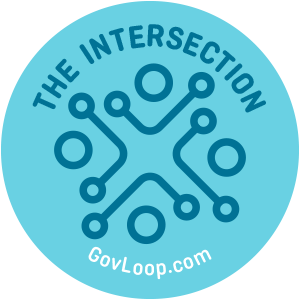 This Q&A is part of a new GovLoop series called “CIO Conversations.” Through 2019 we’ll feature conversational interviews twice a month with current and former federal, state and local chief information officers to get know the people behind the titles. You’ll learn about the perks and challenges of their job, how they ended up in their current position, what’s top of mind for them, how they’ve rebounded from setbacks and more.
This Q&A is part of a new GovLoop series called “CIO Conversations.” Through 2019 we’ll feature conversational interviews twice a month with current and former federal, state and local chief information officers to get know the people behind the titles. You’ll learn about the perks and challenges of their job, how they ended up in their current position, what’s top of mind for them, how they’ve rebounded from setbacks and more.
Phil Bertolini knows how cloud helps governments cooperate by erasing the barriers separating them. As Oakland County, Michigan’s CIO, Bertolini sees cloud bring federal, state and local partners closer together daily.
Bertolini is also Oakland County, Michigan’s deputy county executive, and he has worked closely on some of his government’s key IT projects. For example, Oakland County, Michigan houses two programs that harness cloud’s power to help agencies elsewhere.
The first initiative is called G2G Cloud Solutions and launched in 2011. G2G Cloud Solutions is a free service that lets any agency in the U.S. collect payments online, over the counter or both.
G2G Marketplace, meanwhile, started in 2014 and now boasts nearly 1,000 agencies worldwide as registered members. The portal lets approved government vendors sell their technology solutions – including cloud, cybersecurity and ecommerce options – to other agencies.
GovLoop spoke with Bertolini in April 2019 about how cloud enables programs such as these for stronger collaboration and inclusion. In the following Q&A, Bertolini also discusses cloud adoption strategies and debunks common myths about the technology.
This interview was lightly edited for length and clarity.
GOVLOOP: Why is cloud valuable to governments at every level?
BERTOLINI: There are a couple things that are going on right now in the government space that blend together and force us into this world of what we term “technical debt.” It’s all our legacy environments, platforms and technologies. We have datacenters, secondary datacenters, on-premise technologies, and virtualized and virtual machine (VM) worlds that we have technology in. But our capacity in Oakland County, for example, was getting to a point where we either had to build more on-premise, or we had to start looking at the cloud. Subsequently, we started looking at cloud.
What we discovered is that it’s going to be less costly to be in cloud than it is to keep building on-premise and replacing servers and infrastructure. Simply consuming cloud is better for government on a cost basis.
Cybersecurity is the other piece of cloud adoption. It’s very important that we have a secure environment that we can work with. Many cloud environments are more secure than some governments and platforms, and they also have foundational functionality as far as their infrastructure. We’re finding a way to be more secure. We’re finding a way to manage our technical data, to get rid of the older technologies and older platforms, and we’re able to manage our capacity. Cloud gives us great flexibility.
For example, the two busiest times each year for local governments are when tax bills go out. You have tax bills that go out, you have tax bills that must be paid, and you have all this technology involved in both the assessment and tax responsibilities. If I’m on-premise, that means I must ramp my capacity up to its peak to have it there for when I have these peak times. When I’m in cloud, I don’t have to do that. What I can do is I can ride along in a normalized state, and when I get to those times a year, I can ramp up and build capacity, and then I can turn that capacity off when I don’t need it anymore. That’s huge for government, with strapped budgets and resources.
Additionally, there’s our quest to recruit and retain qualified IT talent. The more cloud services I’m consuming, the more I can potentially use consultants or partnerships. I don’t have to fight the private sector for the tech professionals that I might need to manage my on-premise resources.
GOVLOOP: Where are agencies struggling with cloud adoption?

Oakland County, Michigan CIO and Deputy County Executive Phil Bertolini
BERTOLINI: One challenge is talent. Do you have the talent internally, and do you have the relationships with external talent that will help you go there? You may not have the people to get this done right.
And while it might sound easy, it’s not. The up-front costs are still there. You must still build the environments, procure the licenses for all the cybersecurity appliances and servers that you’re going to use in cloud. Not every company allows you to just use your existing license and transport it to your cloud environment.
All these pieces come into play, and then what you have is this internal push against it. Traditional IT people in government that may have been there quite a long time, they want all their stuff to be under their thumb. They want to see the lights blink, and they want to be able to walk in that nice, cool datacenter.
I can tell you is that internal pushback becomes passive aggressive behavior, and you could end up spinning and trying to get your people to agree that it’s the right thing to do because they’re worried about losing their jobs. And when that happens, tech people are smart – they can figure out ways to change the message or change the path.
We had to do is do a great deal of education. We had to do an incredible financial analysis. We had probably two or three starts in the cloud that didn’t go very well, and we had to go ahead and find out why. And much of that was because we just didn’t have the right knowledge internally, and we didn’t have the right partners at the table, so we had to go seek both of those things to be successful. Again, governments struggle to get the right people.
The other piece with cloud is a technology issue – the access to cloud. What’s your communication path? And some people have internet service providers (ISPs), and they think they can just run their cloud traffic through there. But they’re also banging against all their other traffic, as people are using internet for whatever services are required.
What we’re doing is putting a direct connect into cloud which is a direct path that all our datacenter traffic will be on its own secure path with a redundancy and capacity so it’s not banging into my internet traffic.
GOVLOOP: How do agencies procure cloud efficiently?
BERTOLINI: The worst thing you can do is get a bad contract. Then you don’t have exit strategies, the ability to keep things secure, or the power to audit. All those pieces need to be in your contract.
The other piece is to go find a partner that’s done it. That means engaging your peer community. Find the right vendor, find the right partner and build the peer network so that you can bounce things off people you trust.
Then you must persevere. Those first two to three years are not going to return the money everybody says it does. You’re going to have to fight with the financial side of cloud migration and make sure you’re looking long term rather than short term.
GOVLOOP: What workforce tactics work best during cloud adoption?
BERTOLINI: In terms of educating procurement, IT and finance employees, you must get to why: Why are we doing this?
Everybody in government loves to save money, but that can’t be the only reason for cloud adoption. You must talk about security. You must also discuss the ability to manage environment and ramp cloud services up or down when needed. The education will sometimes come from peers, and sometimes it will be organized education where you can find it. You’re doing all these things to make sure that you’ve got the buy-in necessary to keep moving forward.
GOVLOOP: How does cybersecurity factor into cloud adoption?
BERTOLINI: One of the biggest struggles in government IT is compliance. Meeting all these cybersecurity requirements is difficult. You may end up with multiple security infrastructures. You need to make sure you understand the nuances of that. It’s important to have a strong cybersecurity person that understands the differences between virtual on-premise, physical on-premise and cloud environments. You’ll potentially have different strategies and architectures for all of them.
GOVLOOP: What are some myths that people believe about cloud?
BERTOLINI: People always say that cloud’s less secure. That’s not true. In many cases, cloud environments are more secure than what we have now.
Another misnomer is that cloud’s cheap. Cloud’s not cheap at first. When you do the ROI, some people will say it’s low cost to get into cloud. It may be low cost longer term, and we’ve proven that cloud’s better than doing things on-prem through the ROI in later years that returns the investment. But during those initial years, you have your on-prem environment and you’re also paying for your cloud environment. You’re paying for all that initial implementation, and then you’re paying by the drink, so your ongoing operational costs go up. Ultimately, your ROI looks terrible for the first two to three years. With so many people out there saying cloud’s cheap, you must educate your finance people about how it might take a few years.
A third myth is that cloud is the be-all, end-all that’s going to solve all your problems. That’s not going to happen. Bad technology that you put in cloud is bad technology in cloud. If you haven’t figured out ways to reengineer your business processes to accept the technologies that are enabling you to provide services, then all you’re doing is wrapping technology around bad processes. It doesn’t matter whether it’s on-prem or in cloud, it’s going to be the same.
GOVLOOP: Why are G2G Cloud Solutions and G2G Marketplace beneficial to agencies?
BERTOLINI: What we’ve done by creating these initiatives is that we’re allowing smaller governments to use bigger technologies. We’re allowing them to use the technology they need to serve the citizens. It doesn’t matter if they’re a small little township; they can serve their citizens the same way as a big city does. The beauty of both G2G Cloud Solutions and G2G Marketplace is that each service is based on sharing.
When I ask another CIO for advice, they’re more than willing to give it because they know we’re both in a peer group that works together. I’m more likely to trust a fellow CIO or IT director than I am to trust the private sector outright with no relationship.
The advice that I would give people going to cloud is don’t go alone. Go find your peers that are doing it, whether it’s in your region, state or nationally. Find those people and talk to them.
After that, don’t get vendors that say they can do it without having them prove they can do it. There are many ways to work with the private sector. They’re our partners, and we couldn’t do it without them.





Leave a Reply
You must be logged in to post a comment.